The Leibniz-IZW regular publishes press releases on key findings and insights from its research and on events, awards or personalia. The press releases are distributed directly to journalists on our press release distribution mailing list. Press releases are also disseminated through the distribution services Informationsdienst Wissenschaft, AlphaGalileo and EurekAlert. Are you interested in receiving our press releases directly via e-mail? In this case please send us an email to presse@izw-berlin.de.
Current press releases
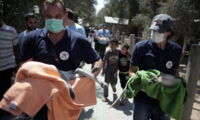
Leibniz IZW researcher receives international “Four Paws Animal Welfare Award”
On September 11th, Dr. Frank Göritz, scientist and Head Veterinarian received the “Vier Pfoten Tierschutzpreis” in Vienna.
Read more … Leibniz IZW researcher receives international “Four Paws Animal Welfare Award”
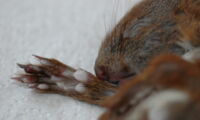
Novel poxvirus threatens juvenile squirrels
A previously unknown poxvirus causes severe disease in European red squirrels from Germany. Molecular genetic investigations revealed a new virus species in the family of Poxviridae. Results of the study are published in the scientific journal „Emerging Infectious Diseases“.

Leibniz IZW welcomes Berlin panda bears
Researchers from the Leibniz Institute for Zoo and Wildlife Research (Leibniz IZW) support the Berlin Zoo in their future panda breeding programme.
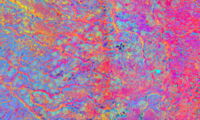
Can we see monkeys from space? Emerging technologies to map biodiversity
An international team of scientists has proposed a new multi-disciplinary approach in which an array of new technologies will allow us to map biodiversity and the risks that wildlife is facing at the scale of whole landscapes. The findings are published in Nature Ecology and Evolution. This international research is led bythe Kunming Institute of Zoology from China, University of East Anglia, University of Leicester and the Leibniz Institute for Zoo and Wildlife Research.
Read more … Can we see monkeys from space? Emerging technologies to map biodiversity
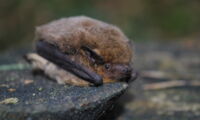
Nathusius and Soprano bats are attracted to green light
Light could disrupt migratory paths, a consideration when planning night time illuminations
Some migratory bats are attracted to artificial green light which may interfere with their flight paths, according to a study published May 31,
2017 in the open-access journal PLOS ONE by Christian Voigt from the Leibniz Institute for Zoo and Wildlife Research and the Free University of Berlin, Germany, and colleagues....
Read more … Nathusius and Soprano bats are attracted to green light
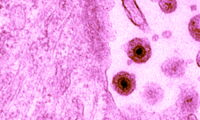
Can airborne viruses survive in water?
A new study challenges the tenet that herpes viruses, like most enveloped viruses, are relatively unstable outside their host. Under a variety of conditions equine herpesvirus remained stable and infectious over a three week period. This suggests that untreated water could be a source of infection by some herpesviruses. The results are reported in the scientific journal “Scientific Reports”.
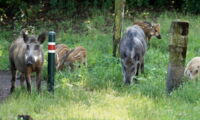
Wild heart: urban wild boars prefer natural food resources
Different than expected, wild boars do not come to Berlin in order to use garbage or other anthropogenic food resources. In fact, also in the city they predominantly consume natural resources. This is the surprising result of a study conducted by the Leibniz-Institute for Zoo and Wildlife Research (Leibniz-IZW), financially supported by National Geographic and the „Stiftung Naturschutz Berlin“. The researchers analysed the stomachs of 247 wild boars from Berlin and the surrounding countryside. The results have been published in the scientific journal „PLOS ONE“.
Read more … Wild heart: urban wild boars prefer natural food resources
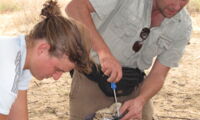
How cheetahs stay fit and healthy
Cheetahs are categorised as vulnerable species, partly because they have been considered to be prone to diseases due to their supposed weak immune system. However, they are hardly ever sick in the wild. A research team from the German Leibniz Institute for Zoo and Wildlife Research (IZW) recently discovered that cheetahs have developed a very efficient innate “first line of defence” immunity to compensate potential deficiencies in other components of their immune system. The scientists have published their results in the open access journal “Scientific Reports” of the Nature Publishing Group.

